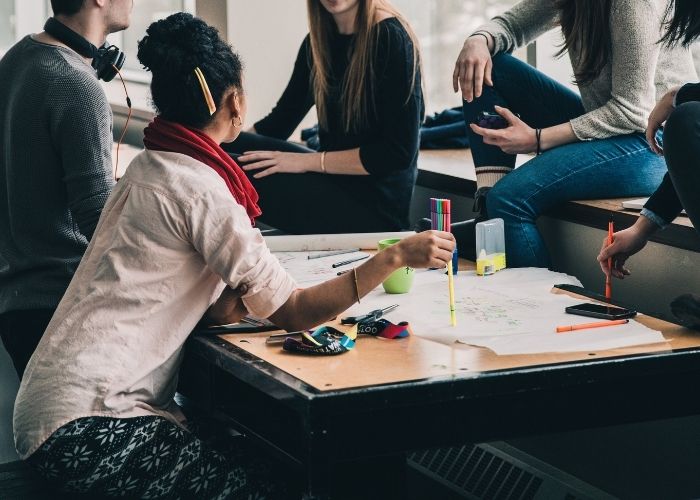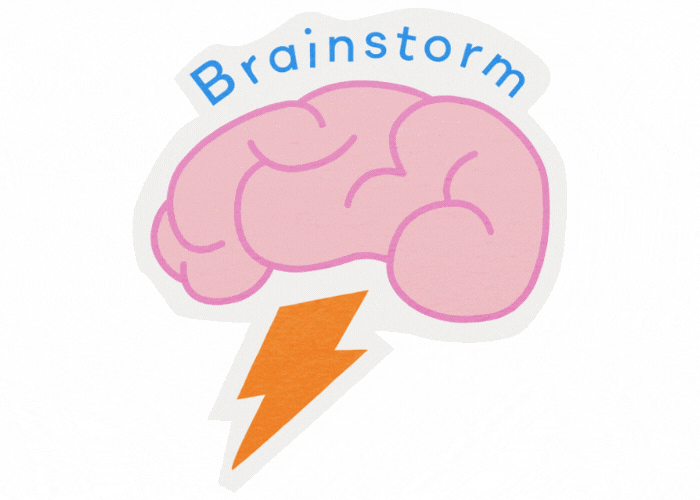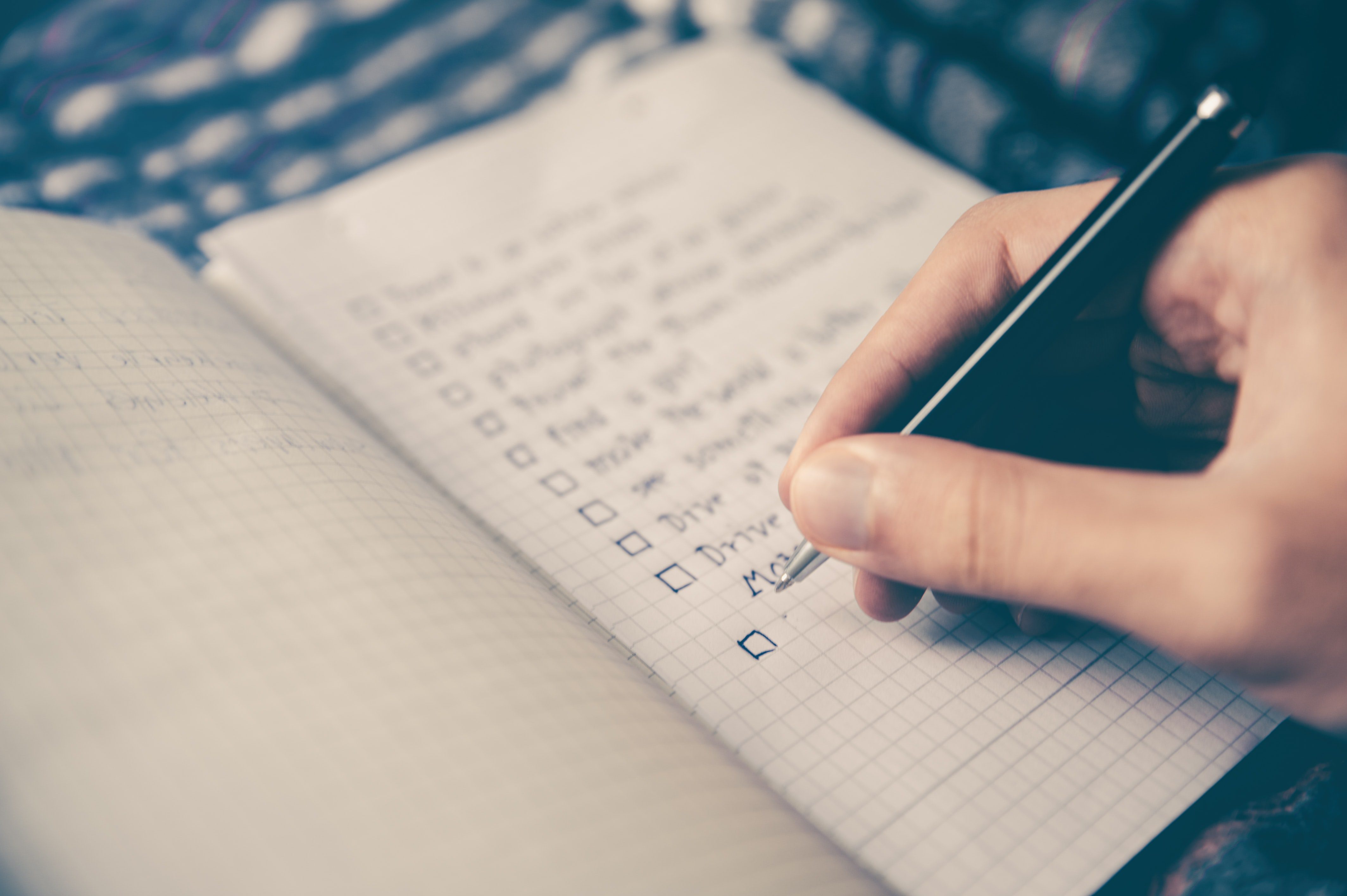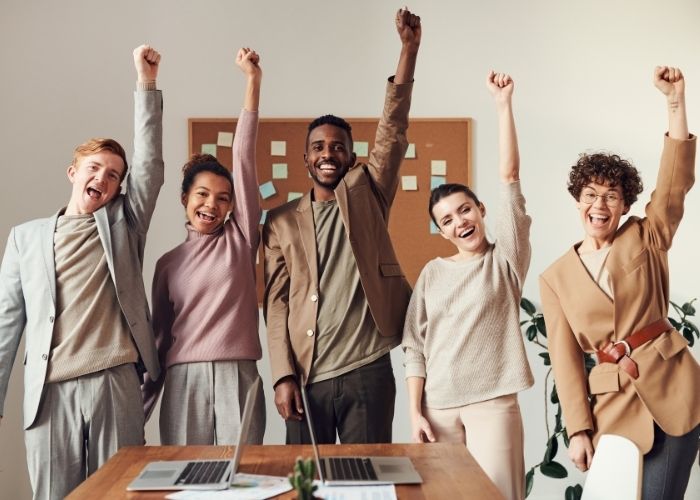Are you tired of those never-ending, snooze-inducing meetings where half the people are zoning out and the other half are multitasking on their phones?
Yeah, we’ve all been there. But fear not, my friend, because I’ve got some killer group facilitation techniques that will turn your discussions into engaging, productive sessions that everyone will look forward to.
From icebreakers that’ll get people talking to tips for managing conflicting opinions, this blog post is your ultimate guide to becoming a master facilitator. So buckle up and get ready to revolutionize your group discussions!
Jump To Section
What is the Role Of a Facilitator?
A facilitator is someone who works with a group of people to help it become more effective. A facilitator usually does not take a particular side or position in the discussion but rather seeks to help the group understand their common objectives and assist them in working together to achieve positive results.
The facilitator is responsible for the process of the meeting or workshop. They ensure that all participants are involved in the discussion, that conflicts are managed constructively, and that the meeting meets the goals set by its organizers.
In this article, we will be discussing group facilitation techniques to enhance your skills.
Why Is a Facilitator Important?
Facilitators can play an important role in helping groups make decisions, solve problems, or complete tasks. They help groups reach a consensus through brainstorming, problem-solving, and decision-making.
What Does a Facilitator Do?
Facilitators are skilled at helping groups work together productively. They can help a group reach a consensus, overcome obstacles, and achieve goals.
They can also help groups resolve conflicts and build trust. The key to effective facilitation is to bring out the best in each individual by helping them focus on their contributions and the contributions of others toward achieving the group’s goals.
They do this by utilizing the skills and techniques we are going to talk about next.
What Skills Does a Good Facilitator Possess?

Strong listening skills. Facilitators must be able to actively listen, paying attention not only to what is being said but also noting nonverbal cues such as body language.
See Related: Master Communication Skills with These 15 Powerful Tips
Active engagement. A facilitator needs to be able to keep the attention of the group on the topic at hand, which can take creativity and energy. You may need to create activities or icebreakers so people know how to interact with each other, especially if they don’t already know each other well.
Self-awareness. As a facilitator, you will need to be aware of your own biases and assumptions so they don’t interfere with your ability to guide discussions and decision-making impartially. In addition, you should be aware of the impact that your communication has on the group.
See Related: The Ultimate Guide for Developing Emotional Intelligence
What are the Various Group Facilitation Techniques?
- Brainstorm
- Consensus
- Discussion
- Around the Room
- Reverse Brainstorming
- Debriefing Sessions
- Planning Session
Brainstorm

A brainstorming session is a gathering of people who come together to generate ideas. This free-flowing session is focused on generating as many ideas as possible in a short period, rather than discussing or evaluating them.
A brainstorming session is an ideal way to get lots of ideas from several people in a short period. The challenge lies in handling the group dynamic, keeping people on track, and channeling the energy into productive ideas.
To make group brainstorming sessions more effective, try the following strategies:
Encourage everyone to write down their ideas before speaking up. This allows people to develop their thoughts without interruption.
Stagger introductions so people don’t interrupt each other. Each person can speak for one minute as they share their ideas with the group.
Try individual brainstorming first, then hold a group session. Individuals can come up with ideas on their own and share them in a group setting later.
Consensus
A group consensus session is a meeting where all in attendance analyze a topic or issue and come to an agreement. The people attending the meeting can represent members of a board, business, or organization.
Group consensus sessions are intended to be democratic and collaborative. Each person present gets a say in the discussion, and all involved work together democratically to reach an agreement on any given topic.
Discussion
A group discussion session is when a group of people comes together to discuss something. This could be on an agreed topic or a prompt given by the facilitator. The focus is usually on engaging with a particular topic to share knowledge and understanding.
A group discussion is an informal process and is defined as a small number of people, who are assembled to solve a problem or exchange information by discussing issues.
Discussions are an essential part of business meetings. They play a significant role in resolving problems, making decisions, and resolving conflict. If a team is to be productive and effective it must be able to effectively hold discussions and meetings.
Around the Room
Around the room is a type of group discussion technique where a facilitator goes around the room getting everyone’s opinion.
It works well for building consensus, or if you want to give everyone in the group an opportunity to participate. It opens with a question or problem statement, and each participant responds in turn. It also helps people get comfortable sharing their opinions.
Reverse Brainstorming
Reverse brainstorming is another creative problem-solving technique that turns regular brainstorming inside out. Rather than thinking about how to fix a challenge, participants doggedly work to figure out how to create the challenge. They are even incentivized to consider ways to make it worse.
This unexpected technique allows teams to see under the hood and reveal unseen roadblocks. It further encourages creative solutions by forcing you to look at the issue from an entirely new perspective.
How to lead a reverse brainstorming session
To effectively use reverse brainstorming in a group, start by clearly identifying the problem to solve. Once everyone understands the issue, ask, “How could we make this problem worse?” Encourage participants to share creative and unconventional ideas without fear of judgment, as all suggestions are valuable at this stage.
The goal is to generate a list of harmful actions related to the problem. After collecting these ideas, shift the focus to finding solutions by discussing how to prevent these negative actions or turn them into positive ones. This process highlights weaknesses in the current approach and empowers participants to think critically and creatively.
By addressing potential risks early, teams can develop more informed plans and make better decisions. Reverse brainstorming thrives in a group setting, tapping into diverse experiences and fostering collaborative exploration that can lead to innovative ideas beyond traditional brainstorming methods.
Debriefing Sessions
Debriefing sessions are highly organized conversations. They are done after an event, activity or project to build on experiences, analyze outcomes, and identify lessons learned.
Debriefing sessions allow a natural and safe space for participants to share their experience. If you want to ensure that a group debriefing session is effective, here are some important steps to take.
- Set a Clear Purpose: Before the debriefing begins, establish a clear objective for the session. Use it to measure the success of a project, talk about what went wrong, or solicit input on team interactions.
- Create a Safe Environment: Encourage open communication by fostering a safe and respectful atmosphere. Setting some ground rules for discussion can help create an environment of respectful discourse, where everyone is encouraged to share their perspective.
- Use Structured Questions: Guide the discussion with specific questions that prompt reflection and analysis. For instance, have participants identify what worked best. Next, ask where things went wrong and how they could do better next time. This framework provides the guardrails to keep the discussion focused and efficient while still covering all necessary angles.
- Encourage Participation: Actively involve all participants in the discussion. Use facilitation methods such as round-robin sharing or small group breakouts. This approach allows you to make space for those who may not speak up as readily.
- Document Key Takeaways: As the session progresses, take notes on key points, insights, and action items. Providing this documentation can be useful for future planning, as well as tracking progress on mutually agreed-upon improvements.
- Follow Up: After the debriefing session, share the notes with all participants and outline the next steps based on the discussion. Being proactive in following up on action items shows accountability and commitment to continuous improvement, which helps to reinforce the value of the debriefing process.
Planning Session
To facilitate a planning session, start with a clear, concise and specific statement of what the session’s purpose and objectives are. This sets a warm, welcoming tone and provides an immediate structure and flow to the discussion.
Open with a simple icebreaker. Creating a low-pressure environment, one where people are relaxed and ready to share their ideas, is key.
Encourage everyone to participate with open-ended questions that elicit critical thinking. Inspire innovative solutions by considering all perspectives. For instance, start with something like, “What obstacles do we foresee in achieving our goals?” This creates an opportunity for deep conversation and high-level creative thinking.
Utilize visual aids in the area, like whiteboards or sticky notes, to get people to document ideas as they’re coming up. This keeps all participants focused and on track, plus it offers a visible agenda to illustrate the session’s overall path.
Encourage collaboration by dividing participants into small groups to brainstorm specific topics, then reconvene to share insights with the larger group. Be flexible enough to roll with it if a particularly fruitful line of discussion begins to bloom.
Finally, touch on the key themes and next steps to close out the session. Assign roles and responsibilities, including what needs to be done and when it should be completed.
How to Choose Which Technique Is Best for Your Situation
Although group facilitation can be used in many situations, including training or team-building exercises among employees, it’s most commonly used when trying to solve a problem or make an important decision.
Here are some things to consider when choosing which facilitation techniques to use:
- How many participants are involved?
- How much time do they have?
- What is the purpose of the discussion?
- Is this a one-time meeting or will there be ongoing meetings?
- Do participants need to remain anonymous during the discussion?
See Related: 13 Tips to Easily Lead a Group Discussion Successfully
Group Facilitation Tips

Ground Rules
It’s a good idea to set ground rules for any group discussion, especially if you will be talking about sensitive issues.
Ground rules help participants feel safe and respected. They make the conversation more productive and can prevent it from getting sidetracked or derailed.
Ground rules for discussions might include:
- Be respectful.
- Give everyone a chance to speak.
- No side conversations.
- Listen without interrupting.
- Request permission before speaking for others.
- Don’t speak over others.
- Don’t use jargon or acronyms that others might not understand.
Timing and Pacing
I’ve been a fan of the Pomodoro Technique for several years. I use it to break down my time into smaller chunks; 25 minutes of work, then a 5-minute break.
But there’s another way to use the Pomodoro Technique. To set time limits on tough conversations. Instead of doing 25 minutes of work, and then taking a 5-minute break, you can do 25 minutes of discussion and five minutes of break.
And when I say “break,” I mean “do something else.” Don’t just leave the room and come back in five minutes. Go grab some water or coffee. Stand up, stretch, and walk around a little bit. Or even go talk about something completely different.
Maybe you’re just having an informal chat with a co-worker about your latest project. Maybe you’re working through a conflict with your partner or spouse. Maybe you’re trying to persuade a client or customer to agree with your latest proposal.

Have a Plan
This is a basic outline for how to plan for a group discussion.
Steps
1. The first step is to take time to brainstorm ideas and concepts. You can do this by yourself, or with other people.
2. After you’ve brainstormed, think about the points you want to make in your discussion. Make a list of these points in order of importance.
3. Now, you have to think about what points you want to cover in the discussion and write them down somewhere. This is called an outline, and it will help you stay focused on your topic and not stray too far into other subjects or topics.
4. Now that you have your outline, think about what facts, stories, or examples you will use to support your points in the discussion. Write down any ideas that come to mind and add them to the outline where they fit best.
5. Next, think about who will be involved in the group discussion, then figure out if there are any problems or issues that may arise when working with this group of people. Everyone must get along during a productive discussion, so it’s good if you can prepare ahead of time for any potential problems!
See Related: 5 Easy Steps for Planning a Meeting with Free Checklist
Have a Common Goal
Have a common goal for the discussion and emphasize it to everybody. Let people know why they are there so they can understand the purpose of the session.
If you want to make sure that everyone is on the same page, give them a brief overview of what you are trying to achieve. When people know what they’re working toward, they can better understand their role in achieving that goal.
Ask Open-Ended Questions
Open-ended questions are a powerful way to engage with your team and get important information. We use them all the time, but not always effectively.
Using open-ended questions can help you learn more about your team and their problems, better understand the situation, and make better decisions together.
Open-ended questions prompt conversation, insight, and discovery. They generally start with who, what, when, where, or how. Open-ended questions are a great way to engage people in a discussion and encourage them to share more than just a one-word answer.
On the other hand, closed questions tend to shut down conversation and limit possibilities because they require a short answer. Closed questions usually begin with do, did, or does.

Involve All Members
When you have a diverse group that includes introverts and extroverts, it can be hard to get everyone’s voice heard. But there are some things you can do to make sure everyone’s voice is heard as equally as possible.
One thing you can do is set a speaking order before the meeting starts. You can use an app like Whose Turn Is It, which lets you keep track of who is next to speak. This way, there’s no one dominating the conversation, and if someone wants to speak up but feels shy, they can look at the app for reassurance that their time is coming soon.
You can also have everyone write down any thoughts or ideas on paper first so that those who are quieter have a chance to collect their thoughts in private before sharing them with the group.
Use Your Active Listening Skills
A good facilitator is a master at listening. This means that you’re not only good at hearing what is said, but also what isn’t said.
Active listening skills are one of the most important facilitation techniques that you can use to lead a group. Just listen and get people involved. For example, after somebody says something, you can paraphrase and ask another participant how they feel about it.
Utilize Visual Aids
Visual aids are essential to effective group facilitation. They create a shared understanding of the topic as well as imaginatively bring the discussion to life for participants. These illustrations are brilliant at addressing complex and abstract ideas and sparking inquiry. They help re-center the conversation to the connective tissue that holds everything together.
Charts, graphs, and PowerPoint presentations are persuasive vehicles. They assist you in communicating your data-driven narrative by emphasizing trends, comparisons, and more. Tools such as a digital whiteboard or flip chart really assist in an ideation session. They help participants to see their ideas jump off the screen in an easy-to-understand visual format!
Final Thoughts
Now you should be better prepared for future group facilitation sessions. You know how to gauge your audience, approach the right kind of activity, communicate effectively, and more. If there’s one thing you take away from this tutorial, let it be this: facilitation is all about making sure everyone in the group has the opportunity to contribute and learn how to encourage that.
Did you find this article on group facilitation techniques useful? Don’t forget to subscribe and share below.


